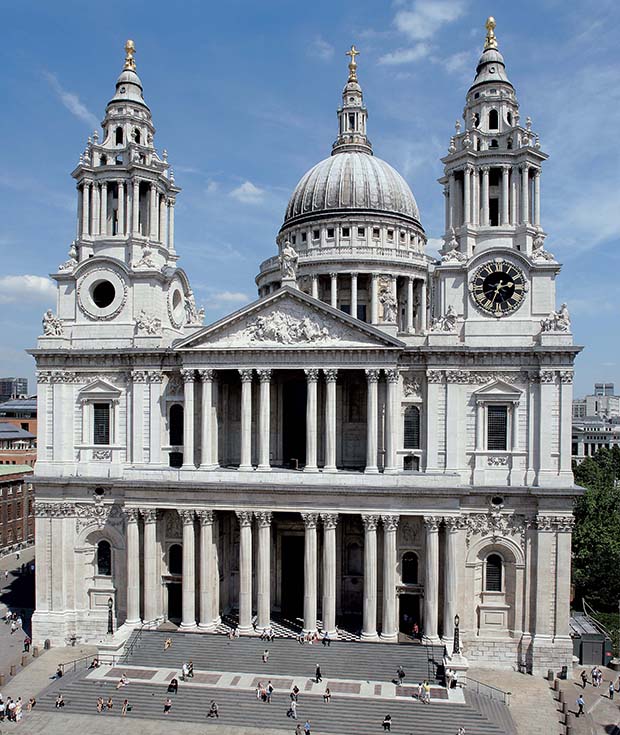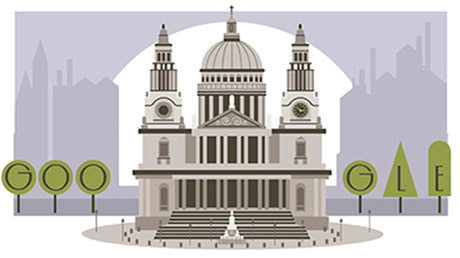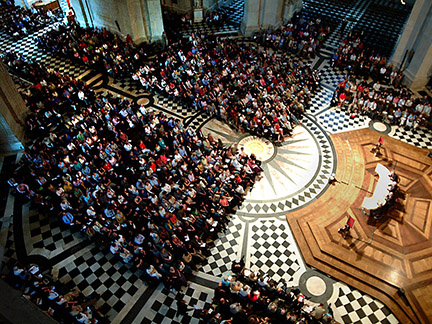
Gombrich Explains Sir Christopher Wren
Britain’s greatest architect, the Story of Art author writes, was able to pair baroque styles with English restraint
The great British architect Sir Christopher Wren was born 382 years ago today. Google has marked the anniversary with a dedicated doodle, which UK users of the site can see today on the search engine’s home page. The animation shows Wren’s greatest creation, St Paul’s Cathedral in London, rising from the ashes of the city’s fire.

Yet why give such a tribute to so long-dead an architect? Because, as the great historian EH Gombrich explains in our multi-million selling edition, The Story of Art, Wren is Britain’s most important architect, one who took the great European styles of the early eighteenth century and found a way to introduce an English sobriety to it, following the British capital’s devastation.
As with so much of Gombrich's commentary, the causes for artistic development can often be traced back to greater forces in history; in the case of Wren it's the split between Catholic and Protestant Europe.
Gombrich writes: “The period around 1700 had seen the culmination of the Baroque movement in Catholic Europe. The Protestant countries could not help being impressed by this all-pervading fashion but, nevertheless, they did not actually adopt it. This even applies to England during the Restoration period, when the Stuart court looked towards France and abhorred the taste and outlook of Puritans. It was during this period that England produced her greatest architect, Sir Christopher Wren (1632-1723) who was given the task of rebuilding London’s churches after the disastrous fire of 1666.”

Gombrich illustrates how Wren took and adapted the prevailing styles from Europe by comparing St Paul’s with genuine Roman Baroque churches by the Italian architect Francesco Borromini.
“We see that Wren was definitely influenced by the groups and effects of the Baroque architect, although he himself had never been to Rome. Like Borromini’s church, Wren’s cathedral, which is much larger in scale, consists of a central cupola, flanking towers, and the suggestion of a temple facade to frame the main entrance."
However, while the forms are the same, Gombrich argues, “The general impression is very different... ...Wren impresses us as being restrained and sober,” he writes. “The aim is not to conjure up a vision of another world, but rather to allow us to collect our thoughts.

“There is nothing freakish or fantastic in his decoration. All his forms adhere strictly to the best models of the Italian Renaissance. Each form and each part of the building can be viewed by itself without losing any intrinsic merits.”
This contrast is especially pronounced in Wren’s interiors. He does not attempt to outdo great Catholic buildings, like St Peter's Basilica in Rome. Instead, his places of worship are simple halls, which are in Gombrich’s words, “both dignified and simple.”
“Its aim is not to conjure up a vision of another world, but rather to allow us to collect our thoughts.” Something to dwell on, perhaps, next time you’re inside such an awe inspiring place. For more peerless insight into this artistic and architectural period and many others, buy a copy of Gombrich's The Story of Art here.